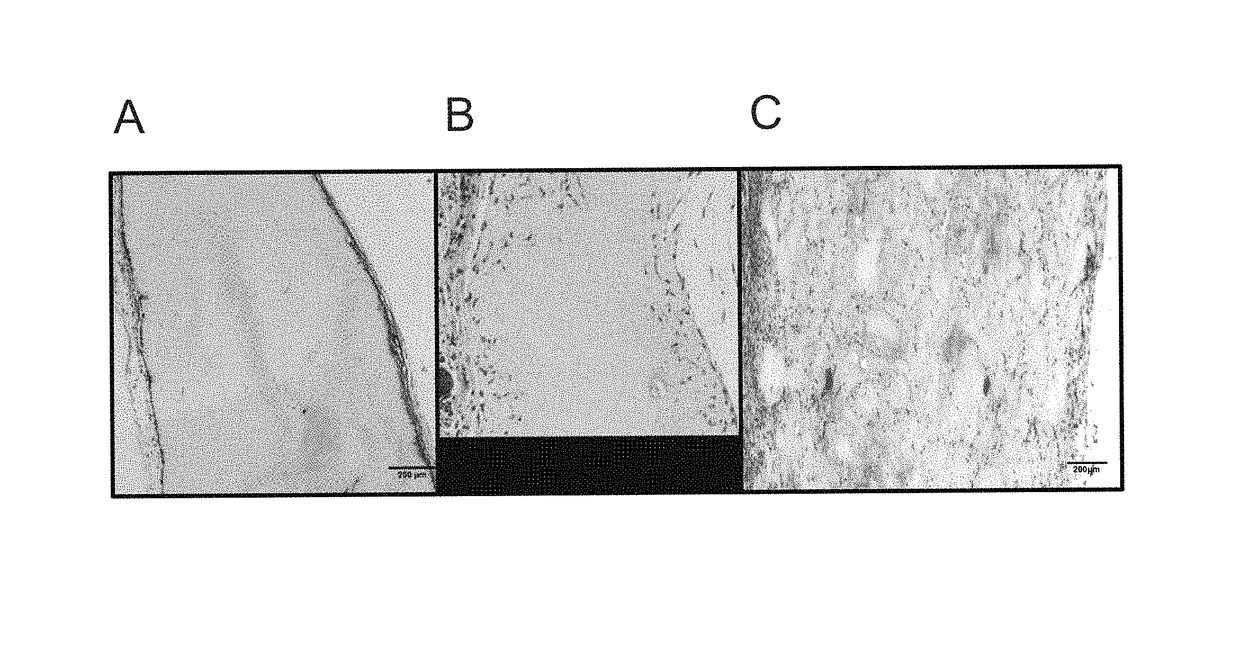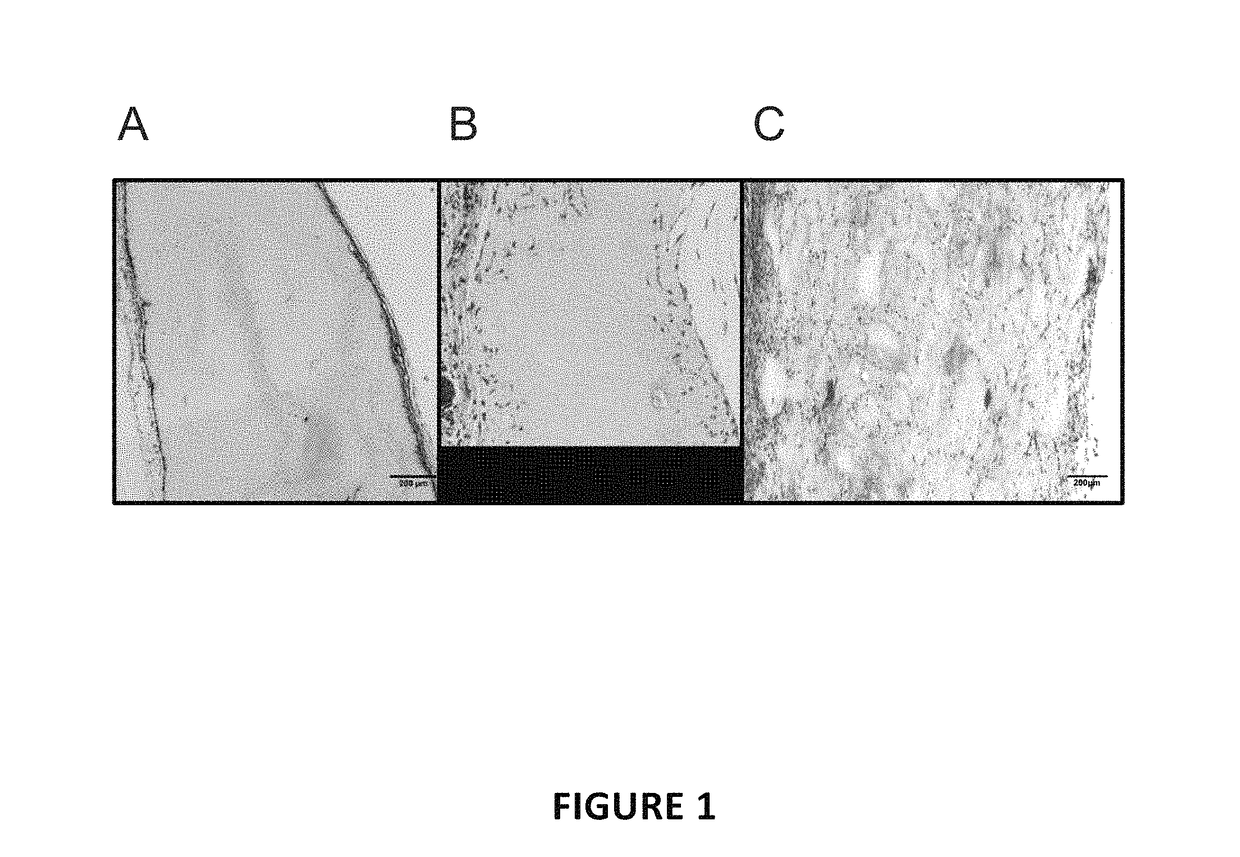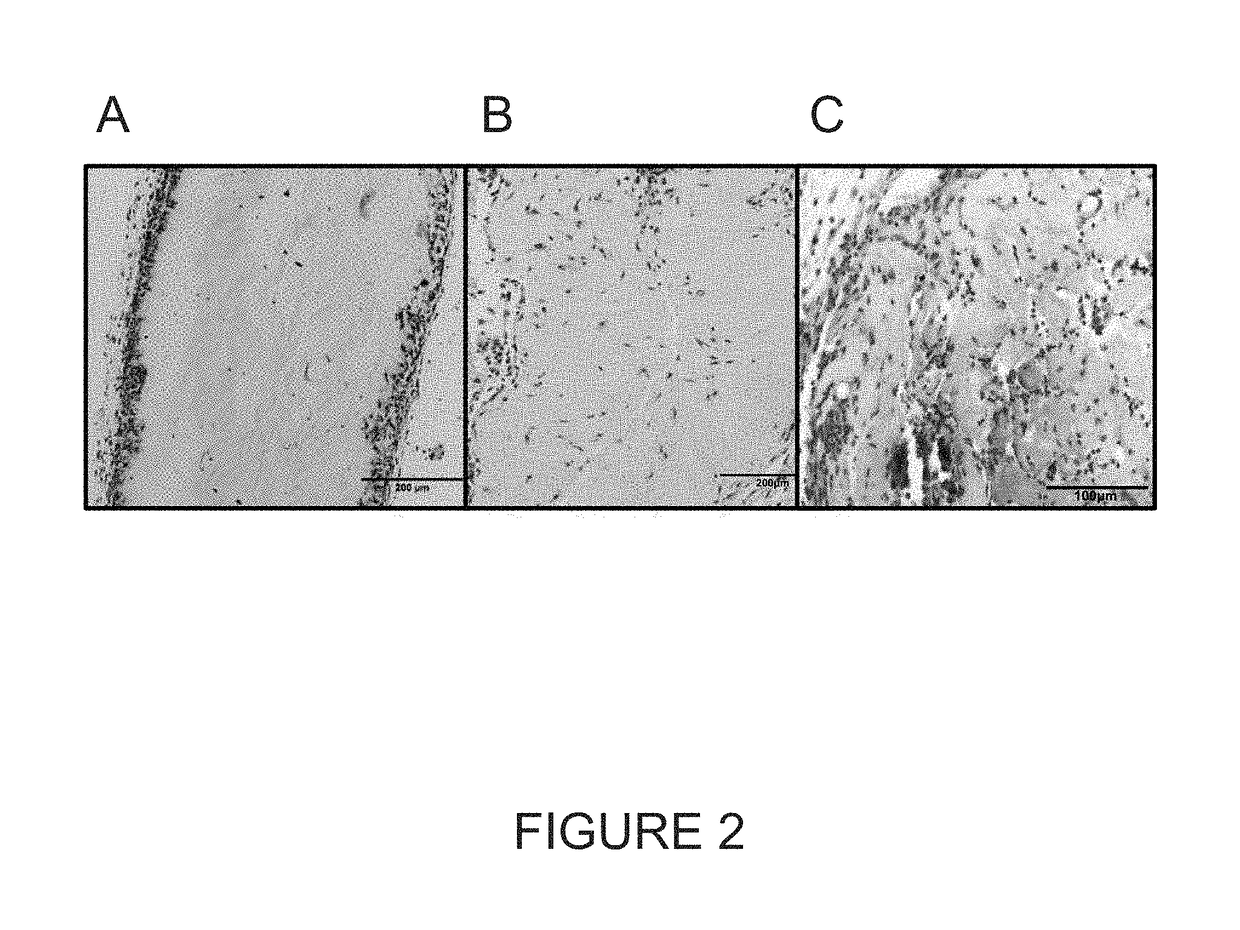Tissue scaffold materials for tissue regeneration and methods of making
a tissue scaffold and tissue technology, applied in the direction of prosthesis, bandages, pharmaceutical delivery mechanisms, etc., can solve the problems of high failure rate of tissue scaffolds in complex settings, avascularity of tissue scaffolds, and insufficient neovascularization of existing tissue replacement products, and achieve the effect of increasing density
- Summary
- Abstract
- Description
- Claims
- Application Information
AI Technical Summary
Benefits of technology
Problems solved by technology
Method used
Image
Examples
example 1
n of Microsphere / Hydrogel Scaffolds
[0055]Collagen type I was extracted from rat tail samples using standard techniques. Skin was removed from rat tails using sharp dissection and discarded. Then, starting from the distal end of the tail, tendons were extracted by breaking a joint within the vertebrae and pulling upward on the distal vertebrae until the distal vertebrae with attached tendon separated from the remaining proximal tail. The vertebrae was then sharply dissected from the tendon and discarded. Next, the tendon was placed in 70% ethanol. This was repeated until all joints within the tail were broken and tendons extracted. The extracted tendons were collected, weighed and placed in a sterile 1 L container. Thereafter, 0.1% acetic acid was added to the tendons to reach a final concentration of 75 ml of acetic acid / g of tendon in order to arrive at a stock collagen solution of 15 mg / mL (1.5% w / v) type I collagen. The collagen stock was then stored at 4 C and agitated for appro...
example 2
re Containing Scaffolds Promote Cellular Infiltration
[0062]Scaffolds were produced one day prior to implantation. Scaffolds were implanted subcutaneously in the dorsa of 8 week old wild-type C57bl / 6 mice. 3 mice were implanted with 4 total scaffolds as follows: Two 1% microspheres in 0.3% bulk scaffolds; one 1% bulk scaffold as a control; one 0.3% bulk scaffold as a control. All mice were sacrificed and harvested for histological analysis after 7 or 14 days. Hematoxylin and eosin (H&E) staining was performed on tissue samples embedded in optimal cutting temperature compound (OCT) medium, to identify cellular infiltration into scaffolds.
[0063]After 7 days of implantation, the microsphere scaffolds (MSS) show substantial and uniform cellular invasion spanning the entire depth of the scaffold (FIG. 1C). Comparatively, cells sporadically and only partially invaded the 0.3% control scaffolds (FIG. 1B), and failed to invade the 1% control scaffolds, instead proliferating along the periphe...
example 3
Densities of Microspheres Relative to Hydrogel Density Promote Cellular Infiltration
[0065]Microsphere scaffolds with different densities (w / v) of collagen in microsphere (MS) and hydrogel (H) were prepared as follows: (A) 1% collagen MS in 0.3% H; (B) 0.6% MS / 0.3% H; (C) 0.4% MS / 0.2% H; (D) 0.4% MS / 0.6% H. See, Table 1.
[0066]
TABLE 1Densities of Microsphere ScaffoldsMicrosphere Collagen Density (w / v)Bulk Collagen Density (w / v) 1%0.3%0.6%0.3%0.4%0.2%0.4%0.6%
[0067]MSS were implanted subcutaneously in the dorsa of adult mice and harvested for immunohistochemistry at 7 and 14 days after implantation. Immunohistochemical analysis identified cellular infiltration in all MSS (FIGS. 3A-3D), with greatest infiltration seen in 1% MS / 0.3% H, and 0.6% MS 0.3% H (FIGS. 3C-3D). In addition, CD31 expression was seen in all MSS after 7 and 14 days of implantation (FIGS. 4A-4B), indicative of invading endothelial precursors and the formation of neovasculature.
PUM
| Property | Measurement | Unit |
|---|---|---|
| diameter | aaaaa | aaaaa |
| diameter | aaaaa | aaaaa |
| diameter | aaaaa | aaaaa |
Abstract
Description
Claims
Application Information
 Login to View More
Login to View More - R&D
- Intellectual Property
- Life Sciences
- Materials
- Tech Scout
- Unparalleled Data Quality
- Higher Quality Content
- 60% Fewer Hallucinations
Browse by: Latest US Patents, China's latest patents, Technical Efficacy Thesaurus, Application Domain, Technology Topic, Popular Technical Reports.
© 2025 PatSnap. All rights reserved.Legal|Privacy policy|Modern Slavery Act Transparency Statement|Sitemap|About US| Contact US: help@patsnap.com



